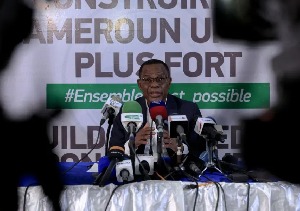Findings could indicate some forests are not helping mitigate effects of climate change by removing excess carbon dioxide from atmosphere.
The increase in the amount of carbon dioxide in the atmosphere is not making trees in tropical forests grow faster, say scientists who have analysed over 1,100 individual trees from forests in Bolivia, Thailand and Cameroon.
Researchers had expected higher CO2 levels to act as a tree fertiliser so boosting growth. The finding could indicate that such forests are not helping mitigate the effects of climate change by removing excess CO2 from the atmosphere.
The results contradict previous studies that made inventories of the total number of trees in particular regions of tropical forests and found the numbers increasing. So it may be that tropical forests are becoming more dense rather than individual trees growing faster.
CO2 is essential to trees. It is absorbed from the air and turned into sugar using energy from light during photosynthesis. The sugar is then transported around the tree allowing it to grow. Each year, a tree lays down a new tree ring. Its width indicates how fast the tree has put on weight during that growing season.
Over the past 150 years, the concentration of carbon dioxide in our atmosphere has increased by 30% to 35%. This should drive more photosynthesis meaning more growth and fatter tree rings.
However, Peter van der Sleen at Wageningen University, The Netherlands and his colleagues found no such increase in the 1109 trees from 12 species they studied. “It was very surprising. The results call into question whether tropical forests are carbon sinks,” said van der Sleen.
The tropical forests contain a quarter of all the carbon found in living things on Earth. They have been suggested as a major carbon sink, removing carbon dioxide from the air. If left in the atmosphere, that carbon dioxide would help retain more heat in the atmosphere and have more of an impact on climate change.
Advertisement
But the new findings, published in Nature Geoscience, run contrary to older experimental conclusions. A network of 50-metre-high towers in some tropical forests measure the concentration of CO2 in the atmosphere above the canopy of trees. These towers show that CO2 does appear to be pulled from the air by the forests. So where is it going?
Studies known as forest inventories may have the answer. In these studies, forest plots are singled out and inventoried at regular intervals. Over the past several decades, these have shown that the density of trees is increasing as more carbon is used up.
This would increase the biomass of the forest by adding more trees rather than accelerating the growth of older ones. Either way, it would scrub carbon out of the atmosphere as a result. But it does not explain why the established trees do not grow faster.
“The experiments that predicted accelerated tree growth with increases in carbon dioxide are elegant and convincing,” said van der Sleen. “Why tree density would be enhanced but not existing tree growth is very difficult to answer.”
New experiments in Brazil will investigate. Called free-air CO2 enrichment (Face), the experiments will bathe patches of the tropical forest in high levels of CO2 and measure what happens to the growth rate of established trees versus saplings.
Infos Santé of Tuesday, 16 December 2014
Source: theguardian.com













